PenInHand - Musings on the Hobby
The Combo Mambo
by Jim Mamoulides, April 30, 2004
One of the oddballs in pen collecting is the pen / pencil combination, popularly known as "combos." New collectors, when they first see these strange beasts, often react much like kids at the zoo at the giraffe exhibit. "What is that thing?" Not only are these double ended writing instruments an unexpected surprise, but they often are very big, dwarfing most of the other pens in a setting.
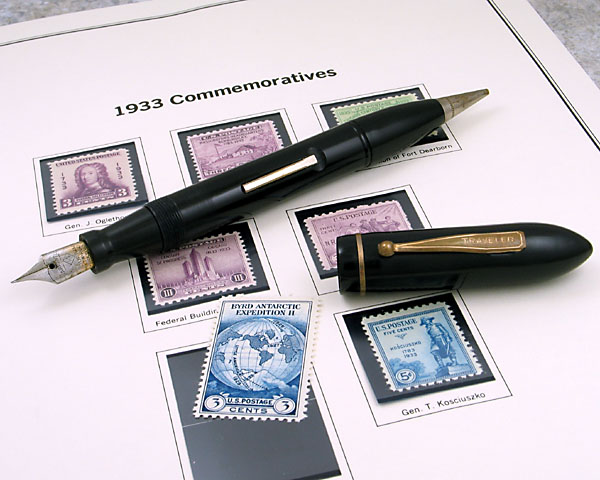
A 1930s Traveler Combo
The combo idea has existed almost as long as pens and pencils could be combined. Looking over groupings of pre-fountain pen era dip pens and pencils will sometimes turn up interesting double ended dip pen and pencil combinations. Recently Conway Stewart released a pen and ballpoint combo, a whimsical nod toward the earlier designs.
The heyday of the combo appears to be the 1930s. The Depression elevated cost savings to another level, and many pen manufacturers, including the top brands offered combos in their pen lines. Sheaffer offered a full-size Balance combo for a short time in the early 1930s, a pen that now commands a high price. Waterman and Parker also briefly made combos as part of their top brand lines. Other makers, including Conklin and Mabie Todd made combos in their secondary lines. These were all high quality instruments that have held up well over time.
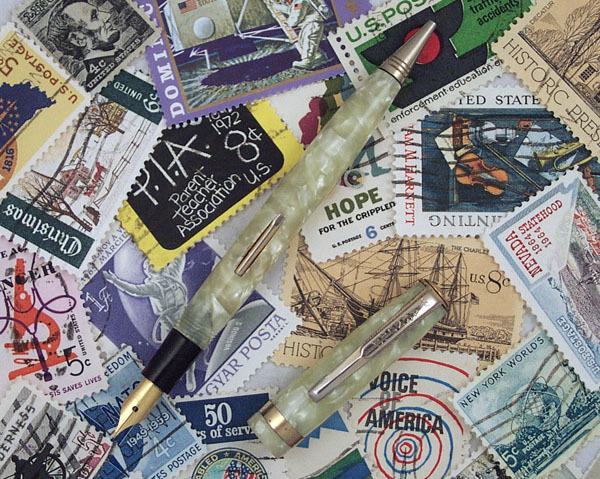
A Very Small
1930s Arnold Combo
The combo seems to have achieved the greatest traction in the second and third tier manufacturers. Wearever, Diamond Point, Arnold, Traveler, Packard, Majestic, and Paramount are all names that appear on these lower quality pens. They came in a kaleidoscope of colors and sizes, though large and extra large seem to be the most popular.
Many combos, even those by virtual no-name brands, were quite well made and sometimes well appointed, with fancy cap bands and trim. Most of the lower brands used a wash on plating that seems to wear off almost in contact with the air. Many also will be fitted with cheaply plated or stainless steel nibs, often with "DURIUM" stampings. Wearever experimented with 14 karat gold nibs in the late 1930s, and such pens will be somewhat harder to find.
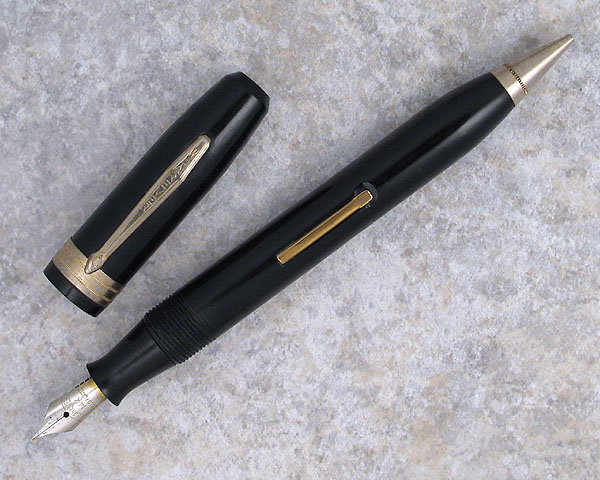
A 1930s Wearever Combo
Why so big? Cramming a fully functioning self filling fountain pen and a usable mechanical pencil into the same space creates some interesting engineering problems. The obvious solution is the equivalent of a ringtop size pen and pencil crammed into the barrel of a full size fountain pen, with the nib sticking out of one end and the point of the pencil out of the other. Considering that typical ringtop pens and pencils run about three to four inches each, this marriage will produce something about six inches long! That's a big pen!
Thus, the Traveler pictured in this article, about 5 3/4 inches long uncapped and about 6 inches capped (at either end), would be a typical large combo, and a very large pen. It's actually longer and larger in diameter than a Waterman Man 100!
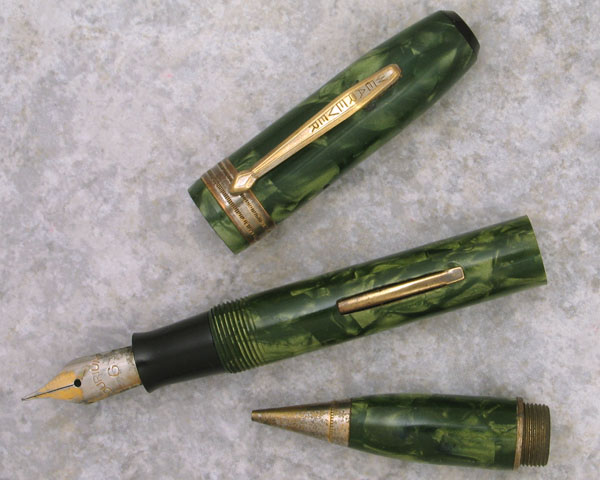
A
1930s Wearever Combo In Green Marble
In actual practice, combo design favors the fountain pen as the primary instrument, with the pencil being more of a casual use item. These combos are more like a short fountain pen with a golf pencil tacked on. In large format, like the Wearevers and Traveler pictured, a reasonably large, but short sac can be fitted, giving the user a good amount of ink between fillings, with the bonus of room for a large nib. Pencils usually have erasers attached at the end, but many don't have space for spare leads, so the short lead precludes heavy use without having a spare container handy.
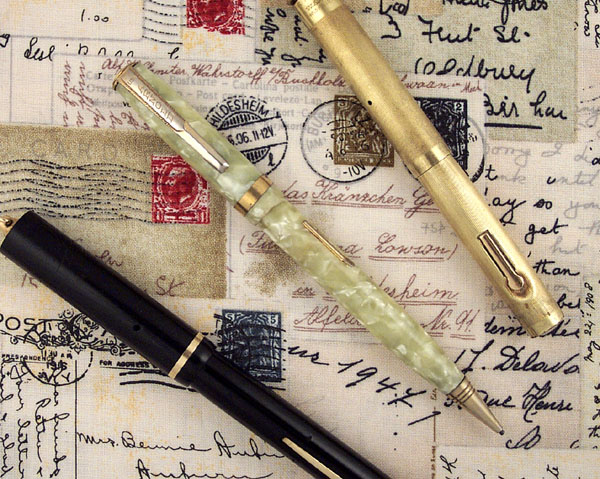
A 1930s Arnold
Combo Between Two Ringtops
There were smaller combos made, including child size instruments. These are cute, but not very practical, given tiny ink capacity and really short leads. More of a casual writer or a toy than a real daily user. The little Arnold pictured here is hardly any longer than a typical ringtop!
Combos faded with the Great Depression, though examples, from low end companies, appear to have been made well into the 1940s.
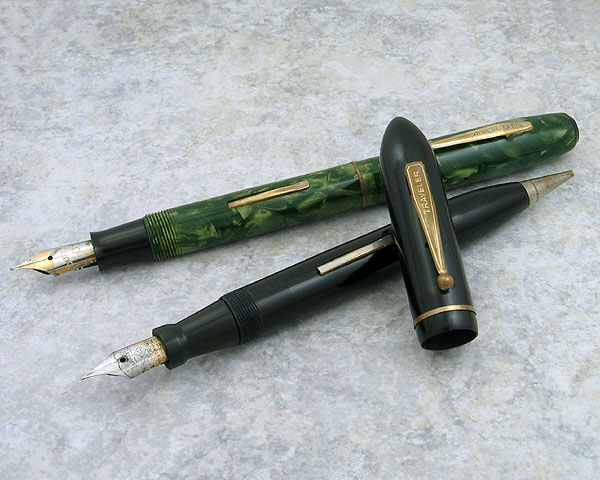
A 1930s Traveler Combo (Front) And A 1930s
Wearever Combo In Green Marble
The "are they collectible" question invariably gets asked about combos. Yes, there are combos made by the majors that were well made and will attract quite high prices, but this is mostly due to their relative scarcity and novelty. The truth is that most of them were made by second line and no-name manufacturers, so unless the piece is particularly nice, you're not making an investment decision. I think the right answer to the "are they collectible" question is, "Do you like them?" Collect what interests you, and you'll really enjoy the hobby!
Discuss / Recommend what you read on PenHero.com
Follow us on Twitter: PenHero
Add a link to PenHero.com on your blog:
(Copy & paste code)
Please only use the photo provided. Use of other photos requires permission.
The provided link photo will change as we update the site.
Comments on this article may be sent
to the author, Jim Mamoulides
PenHero.com Bibliography
